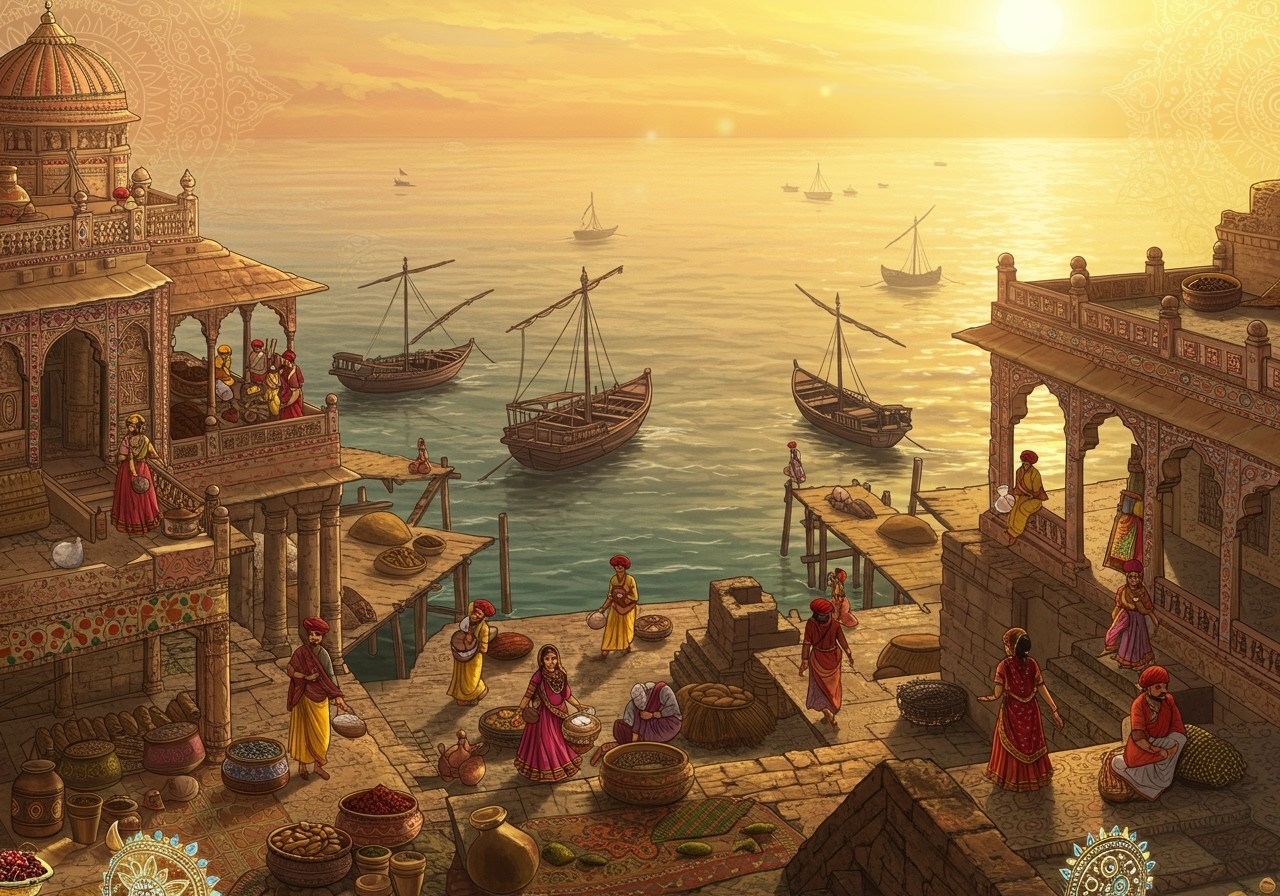
Imagine, for a moment, travelling back thousands of years. To a time when India’s coastline was a bustling gateway to the world. In the heart of modern-day Gujarat, about 30 kilometres from Morbi, lies a place that whispers tales of this glorious past. Welcome to Kuntasi, a forgotten port town of the great Indus Valley Civilization. Known locally as Bibi-no-Timbo, this archaeological treasure on the banks of the Phulki River offers a breathtaking glimpse into our ancestors’ ingenuity and maritime prowess.

The Golden Era of Kuntasi: A Hub of Trade and Craftsmanship
Between 2200 and 1700 BCE, Kuntasi was not just a settlement; it was a thriving economic powerhouse. This was its golden age, spanning both the Mature and Late Harappan periods. Picture a busy port where ships docked, loaded with precious goods destined for faraway lands like Mesopotamia. Kuntasi was a vital link in a vast trade network, a place of immense economic and cultural importance.
- A Gateway for Global Trade: Kuntasi was meticulously planned for trade. Excavations have revealed well-designed dockyards, large warehouses for storing goods, and even a quay for ships to anchor. This wasn’t just a simple village; it was a sophisticated commercial centre facilitating the exchange of pottery, beads, and precious stones.
- Treasures from the Earth: The artisans of Kuntasi were masters of their craft. Archaeologists have been blessed to find a wealth of artifacts here. Large quantities of Lapis Lazuli, a stunning blue stone, suggest it was a major export. They also unearthed exquisite beads made from agate and carnelian, elegant pottery, and copper bangles, each piece telling a story of the life and skills of its people.
A City Built with Vision and Purpose
The town planning of Kuntasi speaks volumes about the Harappan people’s foresight. It was a secure and well-organised settlement. A strong double-fortification wall protected the town, and a watchtower stood guard, overseeing the activities of the port. What’s truly fascinating is that unlike many larger Harappan cities, Kuntasi did not have a citadel. This suggests it might have been a more commercially-focused town, a peaceful hub dedicated to production and trade. The houses, built on sturdy stone foundations with mud-brick walls, show a practical and enduring approach to architecture.
Connecting with Our Heritage Through Sacred Traditions
The incredible artifacts found at Kuntasi, like the unique faience seal with rectangular figures, connect us to the artistic and spiritual world of our ancestors. In our own homes, we continue this tradition of connection through sacred objects. Take, for instance, the Vamavarti Shankh, a revered item in Hindu rituals.
Just as Kuntasi was a hub of prosperity, the Shankh is a symbol of abundance and good fortune. It is believed to be the abode of Goddess Lakshmi, bringing wealth and harmony to the household. Its celestial sound is said to purify the environment and ward off negative energies. At Poojn.in, we understand the importance of these traditions. We offer authentic Pooja Samagri to help you perform your rituals with genuine faith and devotion. Our Vamavarti Shankhs are sourced with care, ensuring you receive an item worthy of your sacred space.
Explore our collection of authentic pooja essentials at Poojn.in today.
The Slow Fading of a Great Port
Every great era must come to an end. For Kuntasi, the decline came not from war or invasion, but from the slow, unstoppable forces of nature. Over centuries, the Gulf of Kutch began to recede, moving the shoreline further and further away. The very sea that had brought Kuntasi its prosperity eventually led to its abandonment as a port. The once-bustling hub slowly fell silent, its stories buried under layers of earth, waiting to be rediscovered.
Answering Your Curiosities about Kuntasi
Many people are curious about this ancient site, and it’s natural to have questions. You might be wondering what makes Kuntasi so historically significant. Its importance lies in being one of the key maritime trade centres of the Indus Valley Civilization. It provides solid proof of the advanced seafaring and trading capabilities of our ancestors, connecting ancient India to other great civilizations of that time.
The discovery of Kuntasi, first reported by P. P. Pandya and later explored by Y. M. Chitalwala, was a landmark event. The artifacts found here, from everyday pottery to precious seals and beads, paint a vivid picture of the life, culture, and commerce of the Harappan people. Today, visitors can explore the site and feel a direct connection to this incredible chapter of Indian history. Conservation efforts are underway to preserve this heritage, ensuring that the legacy of Kuntasi continues to inspire generations to come.
Embracing the Legacy of Kuntasi
Kuntasi is more than just an archaeological site; it is a silent witness to the grandeur and vision of our past. It reminds us of a time when our ancestors were pioneers of trade and culture. By learning about and visiting such places, we not only honour their ingenuity but also strengthen our own connection to our deep and rich heritage. Let us cherish this treasure and help keep its story alive for all time.


